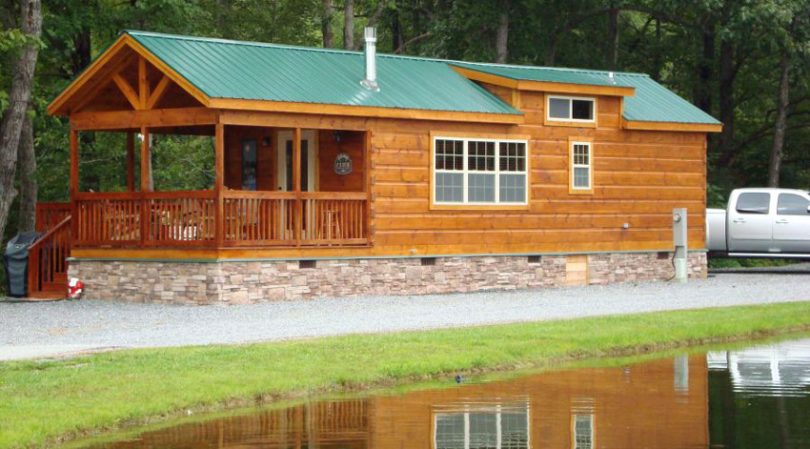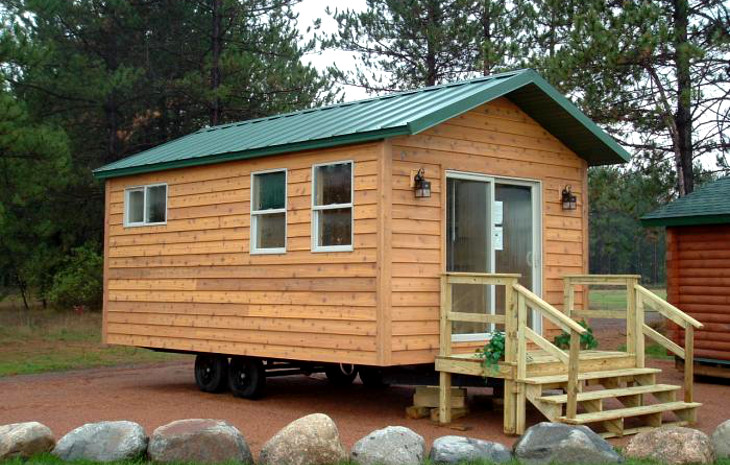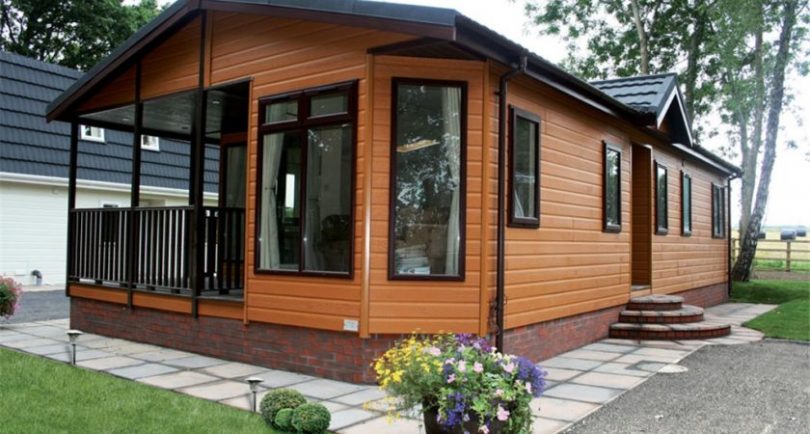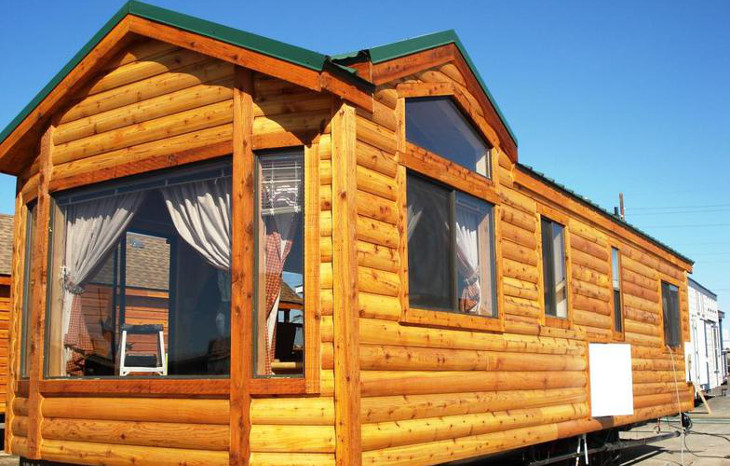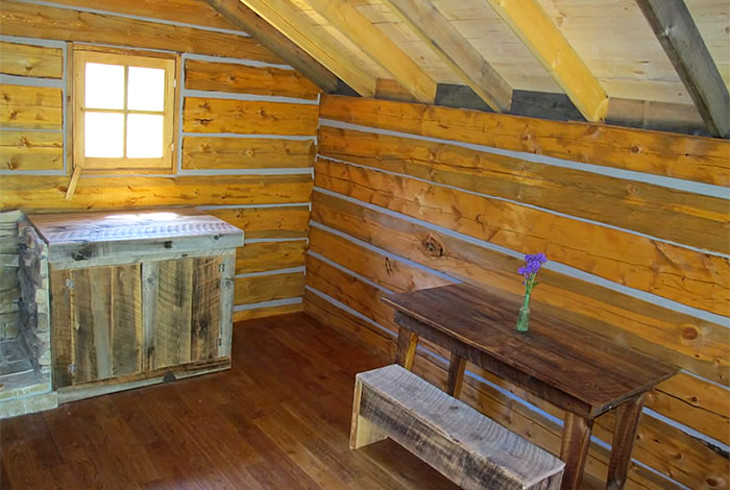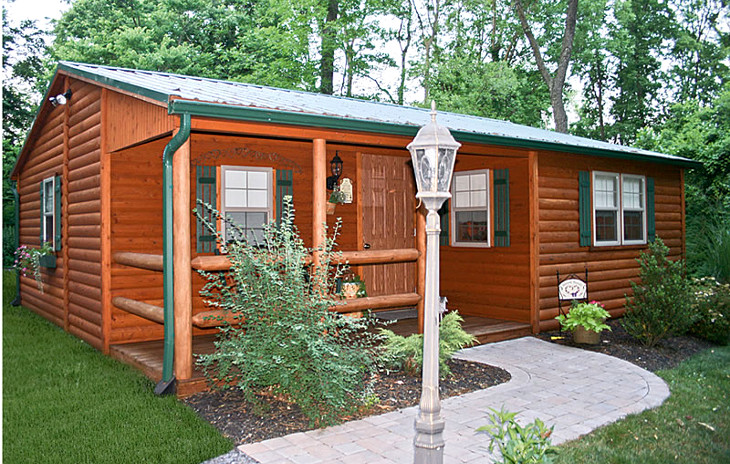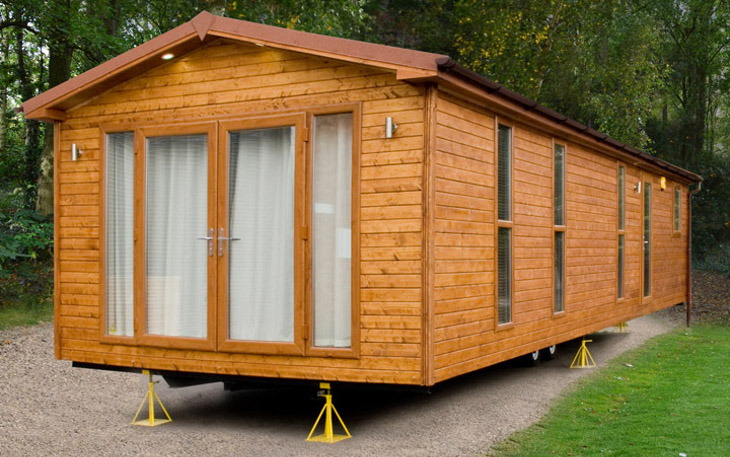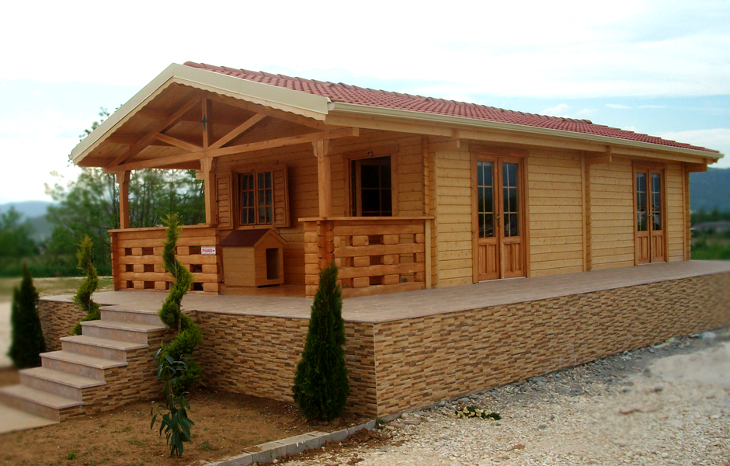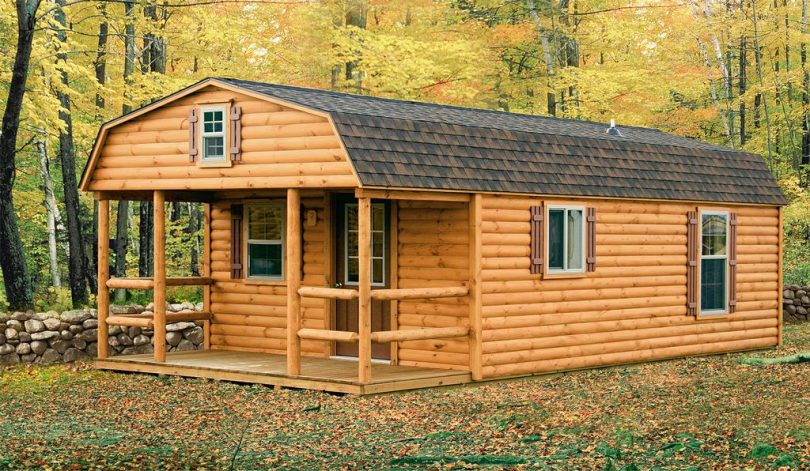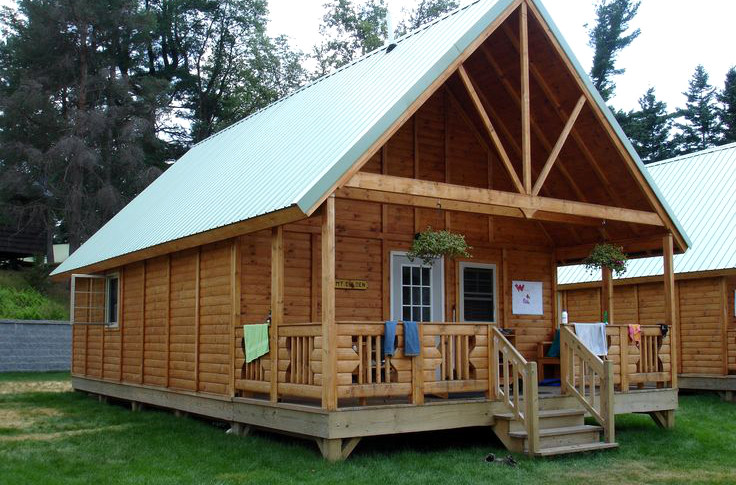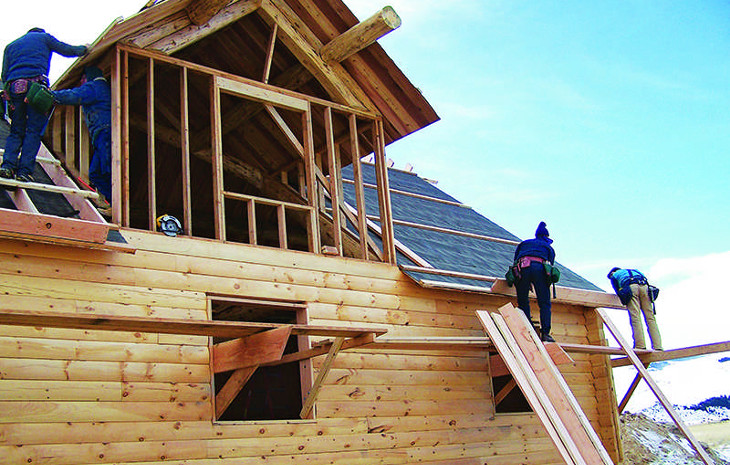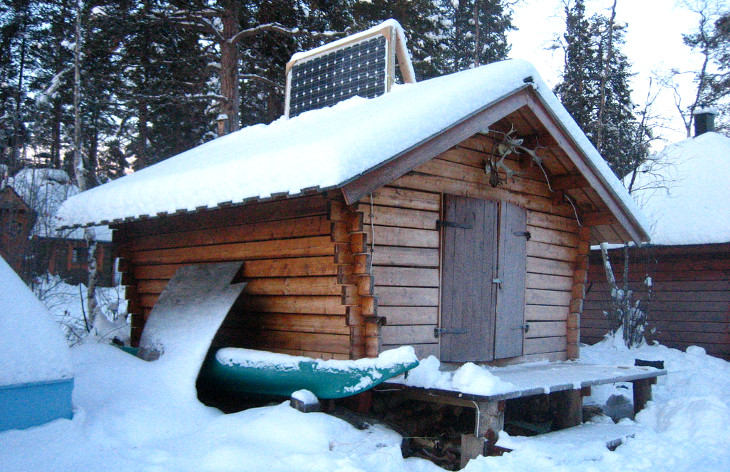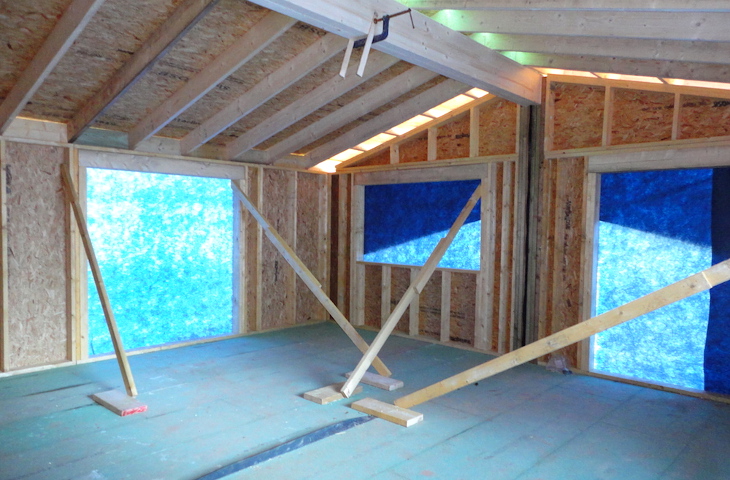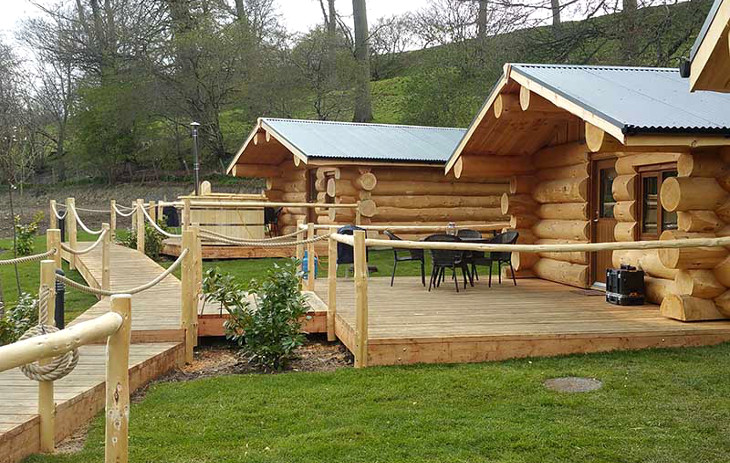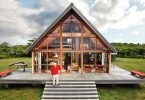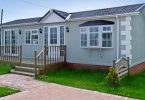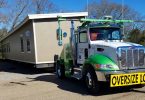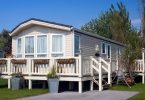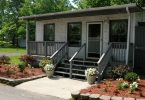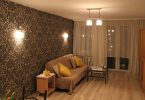Log cabins have been around for thousands of years and are one of the hallmarks of life out in the wilderness. For many of the first Europeans in America, log cabins were the dwelling of choice and many of the designs in use today are inspired by those used by early explorers and settlers.
Modern construction materials and methods plus the growth of urban living have reduced the popularity of these types of homes. However, log cabin mobile homes are gaining popularity among urban dwellers looking for a place where they can get away from the city even for just a little while.
Despite their ancient origins, log cabins are proving to be quite well suited to modern times. Their rustic look, flexible designs, affordability and many other features make them a great choice for individuals or families looking to get started on the journey to home ownership.
Modern tools and methods have reduced the construction of these homes to a simple process that in some cases can be accomplished by the homeowners themselves.
The Factory Advantage
While a stick-built log cabin will be built at the site, a mobile log cabin will likely be built in a factory setting. If the house is quite large, it can be built in sections which will be transported separately before being assembled at the site. A log cabin built in a factory rather than at the site gives you several advantages that can reduce the total cost of home ownership and the construction time.
- Transporting tools, materials, and workers to the site can be very expensive and time-consuming. In a factory, all three things are readily available and this can help to speed up the construction.
- In a factory, the people there are likely to have an established process that is used in achieving various designs. For a house design that is commonly used, the factory setting not only allows the construction to be done quickly but with minimal waste. This is because the workers already have a good idea of how much material is required.
- Factory construction allows for an optimized process that will produce the best possible result each time.
The main challenge that comes with building the log cabin home in a factory is that it still has to be transported and set up at the actual site.
This can be a problem because just like any other mobile house, the log cabin is vulnerable during transportation and when being lifted onto the foundation. The house needs to be properly supported at all times and this is a challenge when the house is hoisted into the air by a crane.
However, many manufacturers have worked out the transportation of these homes down to a science and know when, where and how to transport the homes. A good manufacturer will ask to assess the site first to ensure the house can be safely transported and placed onto the foundation.
A wealth of design alternatives
One of the main advantages of log cabins having been around for as long as they have is the sheer number of designs that have come about as a result. Log cabin designs over the years were influenced by location, time period and the types of tools and materials available.
Type of wood
The type of wood you choose for your mobile log cabin home is important for several reasons. Some types of wood are more expensive, others are more durable and some even possess a certain fragrance that a homeowner may want in their house. The logs may also possess a particular look or color.
Some of the common alternatives that you can choose from include pine, cypress, spruce, Douglas fir, cedar, and oak. The availability of some types of wood will vary with location and this can make them more expensive.
Options such as oak are more expensive due to the time it takes the trees to grow before they can be harvested. The result, however, is a house that can last several generations.
Options in construction
There are several profiles that homeowners can choose for their log cabin manufactured homes. The four common profiles used in the construction are:
- D-shaped logs – These logs are round on the outside and flat on the inside
- Square logs – These logs will be flat on both the inside and outside
- Full-round logs – These logs are round on both sides
- Swedish cope logs – The bottom of the logs have a half-moon-shaped groove that helps during stacking but they’ll appear round on both the inside and outside
The choice of profile will be down to individual preference depending on the look you’re going for. You can also decide on how you’d like the logs in your house to be stacked. Different stacking methods will result in different looks and performance with some providing better sealing against moisture penetration.
The logs can be flattened at the top and bottom and simply stacked on top of each other. Milled logs employ a tongue and groove system which makes it easier to align the logs and also creates a better seal against entry of water and other elements.
Design alternatives:
In many cases, homeowners want to go with a custom design. This means they get to decide the key aspects of how their house will look. The flexibility of wood as a construction material allows this but this can also be more expensive.
For others, living in a mobile log cabin house is about experiencing life as others might have in the early days. This is why manufacturers still utilize many traditional log cabin home designs. Although modern construction methods are used, the traditional look of the house is still achieved. Some of the traditional floor plans found in the U.S. include:
- Pioneer
- Frontier
- Mountaineer
- Settler
- Lincoln
- Adirondack etc.
As the names suggest, many of these traditional floor plans are associated with a specific type of people, environment or region.
Corner Options:
The corners of log cabins, whether mobile or otherwise, are some of the most important parts of the house. They contribute to both the structural integrity of the house and the aesthetics. There are a number of corner profiles that you can choose from for your log cabin house including:
- Dove-tail
- Butt-and-pass
- Saddle notch
- Mortise and Tenon
- Vertical corner post etc.
Eco-Friendly Building
The impact of construction on the environment is a pressing issue due to global warming and climate change. Although there are many issues surrounding the problem of climate change, certain building techniques and materials have been identified as being part of the problem.
On the surface, the use of wood for construction may seem to counter the very idea of environmental preservation but it has been shown that log cabins have a lower impact on the environment than many other types of houses. A mobile log cabin can be even better.
Material Source
Although cutting down of trees is sometimes a problem, wood is one of the most easily replenished resources. Most of the trees used to build log cabins grow relatively quickly and can be harvested in a much shorter time compared to other tree species.
Many companies that harvest these trees replant once a particular area has been cleared. This method of harvesting has made the construction of log cabins sustainable in many areas.
In comparison, other types of houses use materials such as metals, concrete, and plastics extensively. Extraction of metals ores from the ground and extracting the metal from the ore isn’t just energy intensive, it also does a lot of damage to the soil. Cement production does a lot of damage to the soil and cement dust is harmful to both plants and animals when it gets into the air or water.
High Energy Efficiency
One of the reasons why log cabins were favored by the early settlers was the fact that they could still stay warm inside them even during the cold winters. Log cabins have been shown to be very energy efficient. Wood has good thermal properties because it absorbs heat when it’s hot e.g. during the day and radiates it at night.
This helps to keep the house warm. The sheer size of the logs used in log cabins makes them even more thermally efficient. If your mobile log cabin home is properly sealed, you will have minimal need for heating and air conditioning.
Site preservation
This where the eco-friendliness of the mobile log cabin house trumps that of the stick-built one. A lot of environmental damage can occur during the construction of a stick-built house.
The constant movement of people and equipment, the waste from the construction process and various other activities can have a negative impact on the surroundings. In the case of manufactured houses, much of the construction is done in a factory far from the site.
The main jobs that will be done at the site are the preparation of the foundation and the setting up of the finished house. The reduced construction activity can be of massive importance particularly when putting up a house in ecologically sensitive locations such as near water bodies.
Getting the best from your Manufactured Log House
A log cabin house may be the perfect path to becoming a homeowner but it’s important that you make the right decisions if it’s to become the type of home you want.
There are many simple mistakes that could spell disaster for your home or at the very least complicate the construction process.
Get the location right
A mobile log house sounds ideal for a lake or mountain cabin but your idea for a wilderness getaway may not be as good as you think. For starters, the log cabin will have to be transported to the location. When you’re too far off-the-grid, even finding a suitable road can be a challenge.
Many manufacturers will want to know the location and whether or not it is accessible. Poor roads will mean harsh driving conditions and this can damage the home during transport.
The movers will also need room to maneuver especially if the log cabin is a big one. The large log cabins are transported in sections and are usually set onto the foundations or supports using cranes. The site must have enough room for these machines and these activities.
Think about utilities
This has to do with both the general location and the specific site that you choose. As much as log cabins are all about living in the wilderness, you’ll probably want modern utilities such as electricity and plumbing.
If you’re taking the cabin to a place with no access to these utilities you’ll have to consider alternative solutions such as using solar power, water collection and/or purification systems and composting toilets.
Additionally, even if you have utilities available on-site, ensure you set up the mobile log cabin so it can be easily hooked up. This will save you the added expense of running additional utility lines.
What’s your Foundation?
There are several types of foundations that you can choose for your log cabin. The concrete slab and crawlspace are both good options although a simple stone base may also be sufficient for single-wide mobile log cabins. The crawlspace is a common choice for lake cabins because it keeps the house away from the water.
It’s not a good idea for wood to be exposed to water for very long even when treated. The concrete slab will need to be very flat especially when the house is in more than one section. An uneven slab could make it very difficult to align the different sections.
The role the manufacturer will play in the construction of the foundation will vary with the manufacturer. Some mobile log home manufacturers will handle every aspect of the job including preparing the foundation but many don’t. This means having to find a separate contractor to prepare the site for the house.
When choosing a contractor, always go with the one you’re sure will produce the best results and not just the one with the cheapest price. Some homeowners opt to work on the foundation themselves but you should only go down this road if you know what you’re doing.
Building codes
It would be a shame to go through all the trouble of getting a mobile log home only for someone to say you can’t live in it. This is quite possible if a local government inspector finds that your log cabin is unsafe for occupation. Different places have different laws with regard to what is considered a safe structure.
This is because locations face different risks such as hurricanes, avalanches, mudslides and floods. You can either check these codes on your own or work with a manufacturer who is very familiar with the building codes in your location.
Opportunities for better solutions
As good as they are, there are still several ways that you can improve your mobile log home. This may mean making it more energy efficient or better suited to the environment you’ll be using it in.
- Choose the right stain: There are many stains that you can use on the logs especially if you’re trying to achieve a certain look. A log cabin in a wooded setting may still require something extra if it’s to look natural in its setting. Choosing the right stain will be helpful.
- Use solar energy if possible: Many of these mobile log homes are used in settings with wide open spaces where the house will be exposed to plenty of sunlight throughout the day. This means you can take advantage of some affordable solar panels to get your energy for free.
- Install a water harvesting system: This is yet another perk that comes with the setting. Water harvesting will give you easy access to clean water if your home is in the country where industrial air pollution isn’t a problem.
The problem with Kits
One alternative that may be presented to you when you’re looking to have your own mobile log cabin home is to get a kit from a manufacturer and build the house yourself from scratch. For many DIY enthusiasts, this sounds like a good deal because it seems less expensive but you may want to hold on for a minute.
- Building a mobile house from a kit isn’t always as cheap since you may still have to spend more money on labor and extra materials.
- Working with kits will require access to hand tools such as drills, saws etc.
- Any errors whether in cutting, drilling etc. could be quite costly
- It could take you longer to get your house up
- The result may not be of the required standard.
Building from manufactured kits is only a good idea where the finished house can’t be delivered to the site.
An old idea that is golden
Log cabins are as old as you could get when it comes to houses and making them mobile makes them even better suited for what they were used for in the past; living on the periphery of the known world.
Thanks to modern manufacturing methods, these log cabins can be produced faster and with less waste while a large number of designs, construction methods and types of wood means you could end up with something that is unique to you.
The homes are also an eco-friendly building solution at a time when this is quite important. When you make the right decisions when you decide to own a mobile log cabin home and take advantage of the right modern enhancements, this old idea can prove to be the best one yet.

